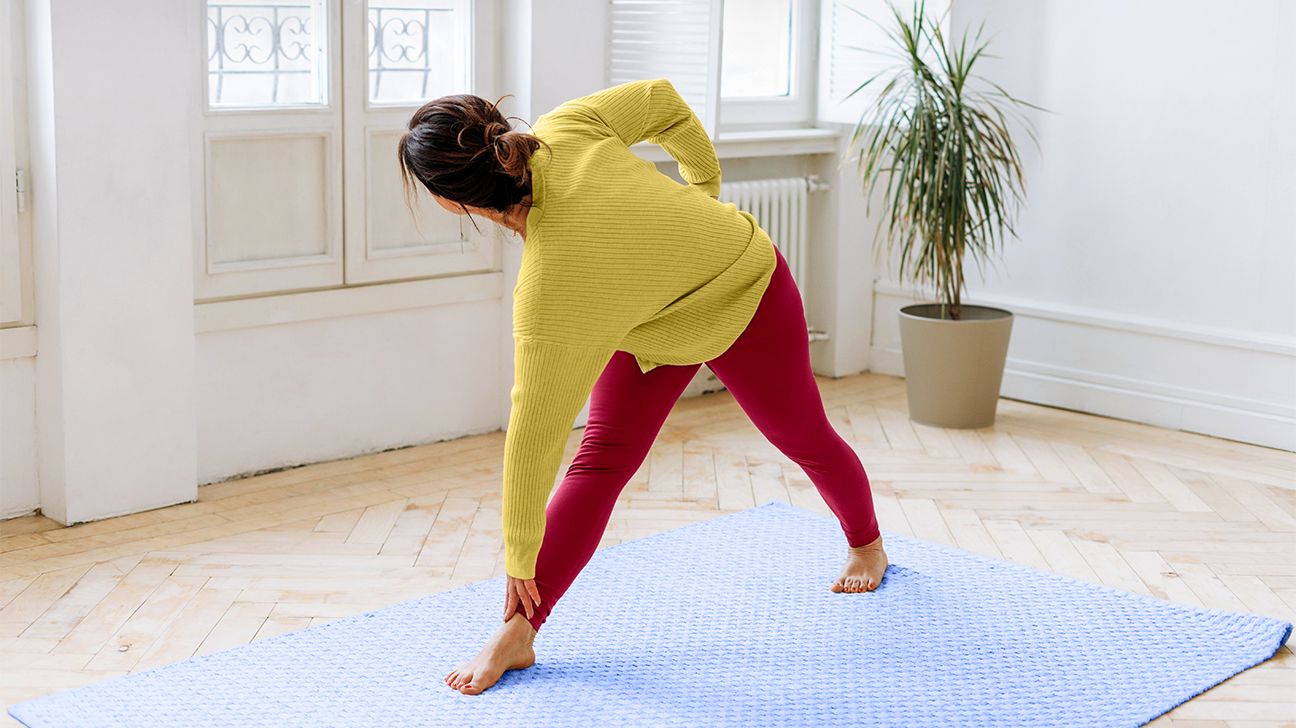We get it: Stretches are boring — but that’s no reason to skip them! Whether your fitness plan involves a weekly bodyweight routine in the park or daily run, you should always start with a warmup (or a pre-workout, if that’s your style!). Even humdrum warmup moves can set you up for major workout #gainz.
Keep scrolling for the deets on the benefits of warmups, suggested moves, and an action plan for your ideal warmup routine.

What makes an ideal warmup routine?
- Loosening up
- Getting your blood pumping
- Dynamic stretching
- Tuning in to your body
- Prepping your body for action
When it comes to strength training and sports conditioning, coaches often think of warmups as performance preparation. They’re not wrong, but it’s also important to warm up your muscles for noncompetitive workouts like spinning and yoga.
Science says warmup can benefit *every* body in several ways:
- raising your temperature for pliability
- loosening stiff muscles and joints
- priming your body for optimum performance
Plus, older research from the early 2000s (RIP iPods) found that warmups also help prevent injury.
A more recent study of 13 college athletes suggests that warmups might offer more psychological than physical benefits. Of course, a study of 13 humans is a *super* tiny study, so more research is necessary to prove this. But it makes sense that a blend of muscle loosening, blood flow, and psychological prep all contribute to better overall performance.
Warmups can differ depending on your fitness level and goals. Build your ideal warmup routine by focusing on these five key elements.
1. Loosen those muscles
Think of your body as a car. It’s much easier to get to 60 miles per hour *gradually* instead of straight out of the garage. Turning on your car, reversing out of your spot, and cruising down the block helps get things warmed up and moving (especially in winter, amiright?).
Your warmup should be designed to loosen the muscles you’ll use during your workout. Warm ’em up and get ’em going, but don’t push them to the point of fatigue (the main event is later, remember?).
Here are a few fun ways to warm and loosen your muscles before your workout:
- foam rolling
- torso twists
- a quick massage gun session
2. Get your heart pumping
Research published in 2010 found that pumping up your heart rate helps warm your muscles and improves performance. The American Heart Association also reports that a heart-thumping warmup dilates your blood vessels to keep your muscles supplied with plenty of oxygen.
A few ideas:
- 5 to 10 minutes of brisk walking
- easy, breezy jogging
- spinning or biking on a low gear
3. Incorporate dynamic stretching
Muscles warmed? Heart pumping? Check, check! Now it’s time for active stretching.
Active stretching — sometimes called dynamic stretching — is all the rage for a reason. Experts say that if some of your workout goals are more muscle power or better range of motion, you need to *move* through the stretch instead of holding it.
As you try these common stretches, remember to continuously move through the range of motion instead of holding your body in place:
Feelin’ nostalgic for the static stretches of high school gym class? (We’re looking at you, one-legged quad stretch!) Save those for a post-workout cool down.
4. Tune in to your body
Remember how the study of college athletes suggested that a warmup is just as important for your mind as your body?
Mindless walking lunges will heat up your butt and quads, but checking in with your body (Are there tender spots? Is one leg stiffer than the other?) will help you take your warmup to the next level.
A recent study even suggests that both meditation and exercise can improve the way you adapt to stressors. What if combining them could turbocharge your mental focus and stamina?
5. Prep your bod for movement
Have you ever visualized a tough conversation with your boss before actually confronting them? Or motivated yourself to push through a run by imagining the finish line?
A 2016 study found that pairing positive mental images with physical training can improve athletic prowess. So think of your ideal warmup as getting your head in the game. You can mentally plan out your workout or even slowly move through the day’s workout at a lower intensity.
We need more research to understand the intricacies of how a mental warmup affects physical stamina. But if high level athletes can benefit from visualization before a big competition, why can’t you?
Warming up before your workouts can help prime your muscles, improve performance, prevent injury, and boost motivation. Your warmup should include dynamic stretching and enough movement to get your heart pumping.
An ideal warmup routine will prep you for your workout, not exhaust you. Plan accordingly, and don’t forget to cool down after the main event!

